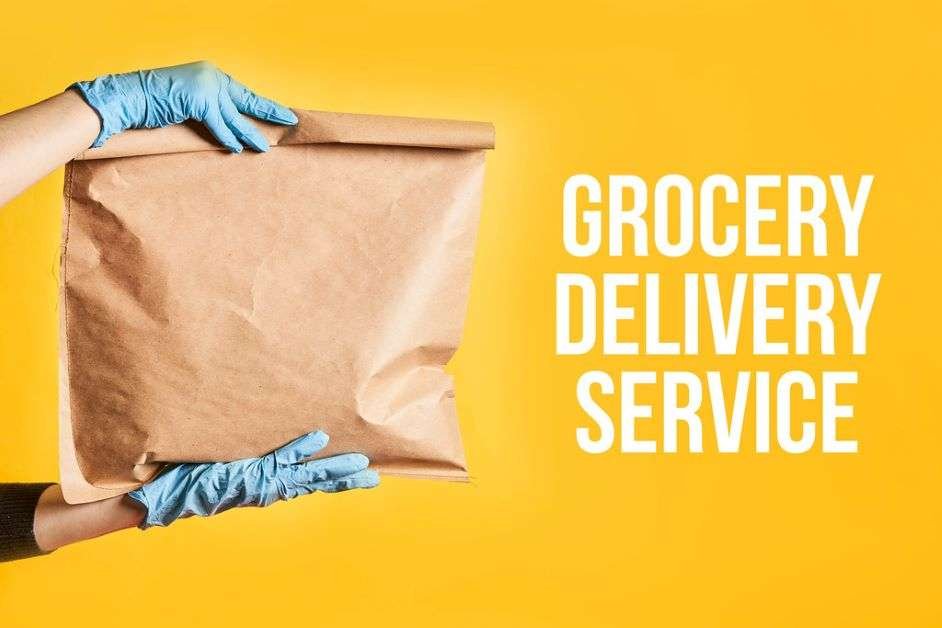The grocery delivery market is witnessing a change towards a more tech-based outlook to match the demands of consumers. Initially, buying from a store was prevalent since there were no other options. However, the emergence of online grocery delivery paints a different picture.
Introduction
The average consumer (one person) spends $394 per month on groceries. If you expand that cart to a family of four, the spending increases to $1,000 monthly. However, shoppers stick to older budgets that are changing with newer price tags. This pattern will unlikely change even if they shift to app-based food and grocery delivery stores.
Have you sensed a pattern for the past few years regarding grocery delivery and shopping? Now, consumers can access many online stores and products, such as vegetables, eggs, and meat products.
If you want to enter this competitive and demanding market, it is best to understand the consumer’s behavior.
Consumer Behavior And Grocery Delivery
For starters, consumer behavior involves more than just buying but also interactions and selection. Since e-commerce has become more popular than ever, 70% claim they do not have any problems purchasing online.
However, you must look at the trigger points that made them switch and welcome online groceries with open arms.
Towards Delivery Costs
Costs related to the delivery of groceries are often overlooked. Over the years, this segment of the delivery process has seen notable changes. Currently, many on-demand grocery delivery businesses often state in advance that the delivery costs might change with the distance. However, the consumer, who often looks for convenient delivery methods, pays extra when needed.
Seeing this dilemma, many other on-demand businesses have opted for free grocery delivery. Here, the consumer has to buy a certain amount of groceries to reach a certain amount in costs to avail of this benefit.
That is why most app-based grocery stores launch limited-time deals to stock fresh groceries. For consumers, being able to order from mobile allows them to select and buy a variety of products.
Choosing The Products
In this segment, brand reliability outweighs the cost factor. The average consumer can spend some extra bucks to have a quality product delivered to their home. Moreover, they find shopping from home relatively easy and convenient.
Every decision has its reasons, from choosing the product brand to selecting grocery apps. To do this, consumers often behave rationally. In other words, they aim to maximize their satisfaction.
Furthermore, they look for an evaluation of their actions. In contrast, many surveyed consumers admit that their food-buying decisions are emotional and reckless. This is due to sales, coupons, additional discounts with a short expiration date, or free delivery services.

Doing The Heavy Lifting
In some cases, it isn’t easy to carry heavy items, especially when the consumer doesn’t have a car. Without a vehicle to carry heavy groceries, an average consumer can easily open the mobile app to deliver the same groceries to their home.
Not only does this save time and physical effort, but it also impacts the shopping experience. Convenience means they can shop anytime without ever leaving their room. They can largely avoid huge crowds during seasonal sales, reducing waiting times.
More Transparency In Selection
Businesses that have partnered with several merchants have updated their layouts to enhance the description of products. The presence of reviews and ratings in the grocery app has also been a huge factor in the buying process. A review by the previous buyer allows consumers to learn more about the delivery quality and the product quality. These reviews affect the overall decision to become much more efficient and effortless.
Ease Of Payment
Apart from this, the convenient method of multiple payment options has simplified the overall buying process. The ease of online payment is quick and leaps over the complicated payment methods by a mile. This further increases the speed of the overall grocery purchase process.
More Fresh Value
It isn’t a surprise to learn that consumers have changed their habits and shifted their priorities regarding fresh food. 65% of people prefer fresh food and don’t care about branding. It isn’t about whose sticker is on the apple or banana, as long as it is fresh and edible. In other words, your customers are more willing to pay a premium for fresh food than ever.
Not Loyal In A Conventional Sense
Consumers often have an open mind to trying new products. As a result, their choices are unpredictable and not planned at all. 63% said they are not looking forward to waiting for an item to be back in stock before trying another brand.
Peak Moments
As the consumer buying pattern has changed, so have the peak moments. These peak moments might be discovering an exciting new product in the grocery store. Whereas, in the online grocery journey, a peak moment might instead be on-time delivery. It can also include a handwritten thank-you note or some other surprise, such as a free sample.
A Stress-Free Environment
Stress is the driving force behind changing consumer behavior. Consumers who shop for fresh food at least once a week make up about 80% of fresh sales.
People who said they shopped for fresh food multiple times a week dropped by half and now shop only once every two weeks, on average. This is a troubling change for fresh grocery products.
Meanwhile, the focus is on having fresh groceries, as they are more sustainable, organic, and healthy. Grocery delivery apps that make strategic moves by selling relatively higher-priced fresh foods and marketing them smartly will most likely reach today’s shoppers. Reducing these frequent shoppers can’t be good news for the traditional channel.
The Future Is Mobile
One fascinating and incredibly important finding is that shoppers increasingly use mobile apps. For example, a shopper might use it to locate a specific product, check for promotions and deals, or self-checkout.
Phone apps can help consumers find items that have those qualities in-store.
The transition to mobile is a trend occurring in many industries: banking, retail, healthcare, entertainment, and food service. It’s unsurprising to learn that in the next two years, using mobile phones to shop for groceries will be three times higher than on their desktop.
Make Your Online Grocery Brand Relevant
If you are serious about starting a grocery delivery business, start with inventory upkeep. Every grocery you showcase must be verified and checked by the merchant you partner with.
Foods such as “six days of fresh strawberries” or “10-day bananas” will last the longest past the day of purchase. So, essentials like these can still be fresh and meet demands whenever your customer orders them from the grocery store using your app.
If you miscalculate, the goods delivered to your customer will expire, further deteriorating your branding and the merchant you’ve partnered with. Please do this by emphasizing fresh attribute messaging as a core part of their brand.
If done properly, customers may begin to feel that all fresh food bought in your store must have those attributes. Furthermore, shoppers have also grown into the habit of online grocery shopping’s benefits.
They prefer this as part of a seamless shopping experience across all in-store, mobile, and online channels. As we advance, the increase in consumer adoption will cut back on monthly online shopping trips.
So, each time someone wants grocery delivery online from your app, they do so because they choose to have cashback or associated offers. Overall, the shopping experience continues to be an important screw in the well-oiled machine of consumer preference.
More Information: Trends in Online Grocery in 2023: What’s Hot?
Conclusion
Despite being able to shop in-store, 61% of consumers will continue online grocery shopping moving forward. 7 in 10 consumers will shop online more frequently than they have before. For 71% of consumers, the speed of checkout remains a priority.
Grocery delivery is one of the most dynamically growing forms of the online trade. Consumers can buy almost anything more conveniently and faster. However, the most important advantage of online grocery shopping is the possibility of saving time.
So whenever you launch your grocery delivery app, try to enter the market quickly. Stop developing the app for months and take advantage of a pre-built solution. This is also called a clone and offers similar benefits as the DoorDash app.


